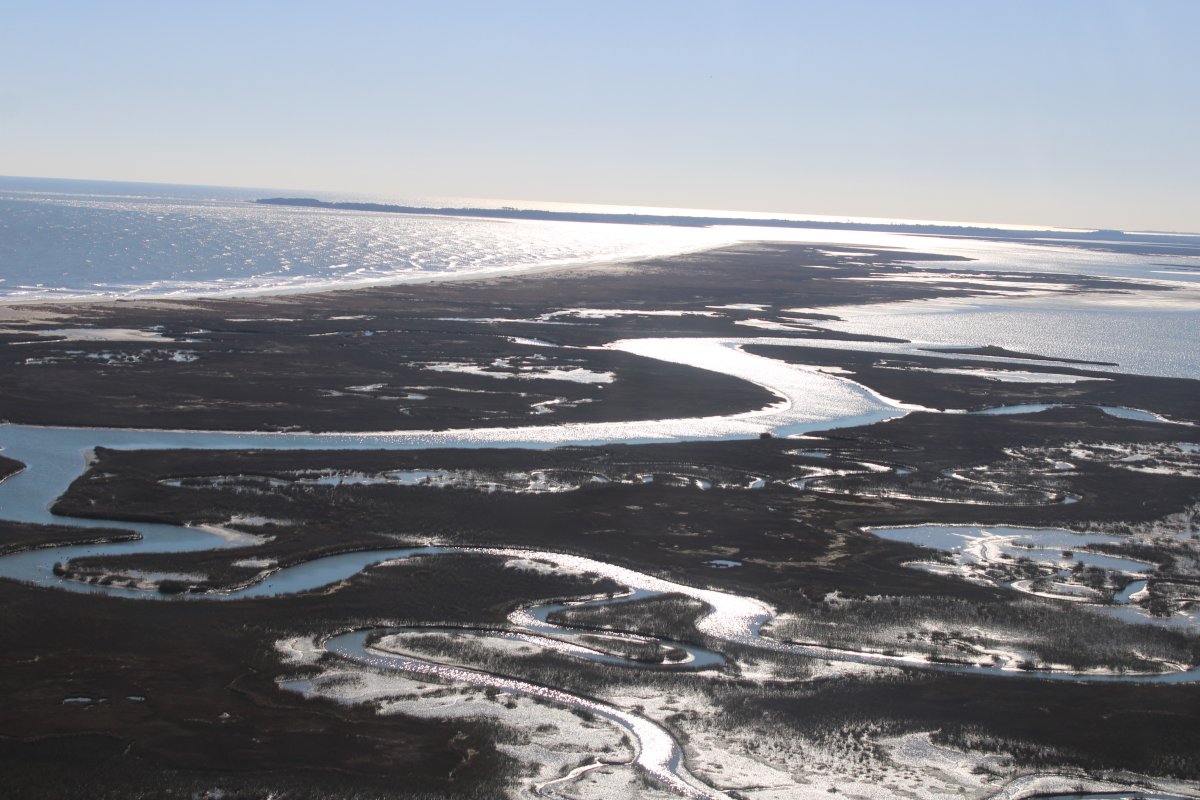January 10, 2021 - Hummel, Yorktown, Barrier Islands
On Friday the plan had been for a bunch of us to fly down to Hummel Airport, Virginia, for breakfast. Wheels up at 9AM. I showed up at the Skypark and no one was there! I went by myself anyways because I had never really flown around the Hummel area, wanted to check out the Yorktown American Revolution battlefield from the air, and then fly back up the barrier islands on the Delmarva peninsula.
It was a little cool in the morning so I pre-heated the engine. Took off at 9:15. Soon I was winging my way southeast over the Chesapeake Bay.
Visibility was phenominal. In the center is Annapolis and Washington D.C. was clearly visible in the distance.




Approaching Hummel Airport from the west. That's the Rappahannock River to the left and the Chesapeake Bay to the right.
The Robert O. Norris Jr. Bridge crosses the river. It serves as the crossing for State Route 3 over the river. 11,237 feet long, it was opened on August 30, 1957, and replaced a ferry service. It is also known by locals as the White Stone Bridge or Rappahannock River Bridge. The water is over 60 feet deep near the center of the bridge. Today, more than 8,000 vehicles cross the two-lane bridge each day.
Robert Opie Norris Jr. (November 4, 1880 – June 21, 1960) was an American Democratic politician who served as a member of the Virginia House of Delegates and Senate. He was the Senate's President pro tempore from 1945 to 1950

Looking down at Hummel Airport.
I decided to continue south for some aerial sightseeing, then come back to Hummel for food and fuel.







Getting closer. I remember going here as a kid.
The Siege of Yorktown, also known as the Battle of Yorktown, the Surrender at Yorktown, or the German Battle, ending on October 19, 1781, at Yorktown, Virginia, was a decisive victory by a combined force of American Continental Army troops led by General George Washington and French Army troops led by the Comte de Rochambeau over a British army commanded by British peer and Lieutenant General Charles Cornwallis. The culmination of the Yorktown campaign, the siege proved to be the last major land battle of the American Revolutionary War in the North American region, as the surrender by Cornwallis, and the capture of both him and his army, prompted the British government to negotiate an end to the conflict.
A naval victory by the French over the British made the victory possible. In the beginning of September 1781, Admiral Comte de Grasse, commander of the French West Indies fleet, defeated a British fleet led by Sir Thomas Graves that came to relieve Cornwallis at the Battle of the Chesapeake. As a result of this victory, de Grasse blocked any reinforcement or escape by sea for Cornwallis and also disembarked the heavy siege guns required by the allied land forces. By late September, Washington and Rochambeau arrived, and the army and naval forces completely surrounded Cornwallis.







The George P. Coleman Memorial Bridge (known locally as simply the Coleman Bridge) is a double swing bridge that spans the York River between Yorktown and Gloucester Point, in the United States state of Virginia. It connects the Peninsula and Middle Peninsula regions of Tidewater, Virginia. The bridge is the only public crossing of the York River. Originally built in 1952, it was reconstructed and widened in 1995.
The current 3,750-foot long double-swing-span bridge carries United States Route 17, a four-lane arterial highway. The movable span is needed to allow ship access to several military installations that are upstream of the bridge, most notably, the United States Navy's Naval Weapons Station Yorktown. The roadways are almost 90 feet above the river at the highest point of the bridge. The bridge is the largest double-swing-span bridge in the United States, and second largest in the world.
The toll bridge was named for George P. Coleman, who from 1913 to 1922 was the head of the Virginia Department of Highways and Transportation, predecessor to the Virginia Department of Transportation (VDOT).
On the other side of the bridge, left side, is the Yorktown Naval Weapons Station.

























































